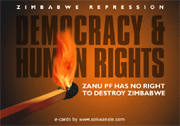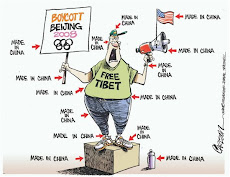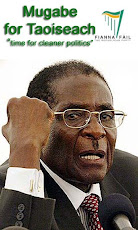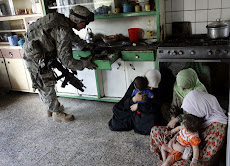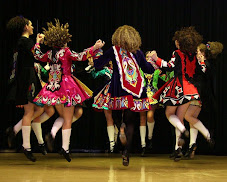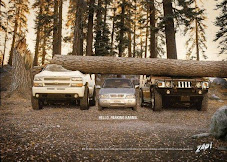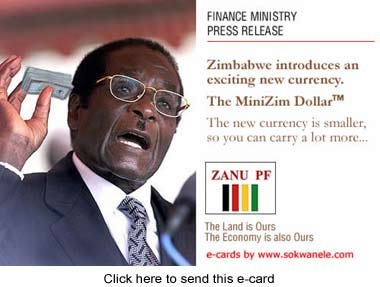

Employees on Jacob Mwale’s farm near Lusaka, Zambia, often must work by candlelight because the farm loses electricity at least twice a week. When that happens they also are forced to use charcoal to warm the newborn chicks, which must be kept at a constant 90 degrees after hatching.By
MICHAEL WINES Published: July 29, 2007
LUSAKA, Zambia — It is not that Jacob Mwale minds irrigating the 11 acres of land he farms just east of Lusaka, Zambia’s capital. It is irrigating his 11 acres in the dead of night that angers him. Power failures are common in Lusaka and much of southern Africa. Two or three times a week, the Mwale farm abruptly loses power, like the homes and businesses of some of Zambia’s 300,000 other electricity users. When the power returns, sometimes late in the evening, Mr. Mwale’s farmhands work overtime, watering the fields by moonlight. “If they shut down the whole day, I have to work nights, and pay extra,” Mr. Mwale, 39, grumbled. “It’s killing us.”
Power blackouts — “load shedding,” in utility jargon — are hardly novel in sub-Saharan Africa, where many electricity grids remain chewing-gum-and-baling-wire affairs. Even so, this year is different. Perhaps 25 of the 44 sub-Saharan nations face crippling electricity shortages, a power crisis that some experts call unprecedented. The causes are manifold: strong economic growth in some places, economic collapse in others, war, poor planning, population booms, high oil prices and drought have combined to leave both industry and residents short of power when many need it most. “We’ve had no significant capital injection into generation and transmission, from either the private or public sectors, for 15, maybe 20 years,” said Lawrence Musaba, the manager of the Southern African Power Pool, a 12-nation consortium of electricity utilities at the continent’s tip.
The implications go beyond candlelight suppers and extra blankets on beds. The lack of reliable power has already begun to hamper the region’s development, clipping more than 2 percent off the annual growth rates of the worst-hit African economies, according to the World Bank. Some nations, like Ghana, have tried to deal with their power crises by leasing huge teams of gas generators, producing emergency power at exorbitant rates until power plants can be built. In Nigeria, Angola and some other nations, virtually all businesses and many residents run private generators to supplement faltering public service, saddling economies with added costs and worsening pollution. “I’ve been on the 20th floor of an apartment building in Luanda, and there would be generators on all the verandas, with the racket, the fumes,” said Anton Eberhard, a former electricity regulator and an expert on power at the University of Cape Town. “And the lift isn’t working, because the main power supply is off.”
In normal times, South Africa’s muscular chain of power plants fills the gaps of its neighbors. But South Africa now could experience up to seven years of its own electricity shortages. Rolling blackouts blanketed parts of the country in January, and sporadic power failures have persisted since. The gravity of this year’s shortage is all the more apparent considering how little electricity sub-Saharan Africa has to begin with. Excluding South Africa, whose economy and power consumption dwarf other nations’, the region’s remaining 700 million citizens have access to roughly as much electricity as do the 38 million citizens of Poland. Much goes to industry: a single aluminum smelter near Mozambique’s capital, Maputo, gobbles four times as much power as the entire rest of Mozambique. On average, the World Bank says, fewer than one in four sub-Saharan Africans are hooked to national electricity grids. Moreover, some grids are so poorly maintained that electricity suppliers get paid for as little as 60 percent of the power they generate. The rest is either stolen or lost in ill-maintained networks.
For decades, the region had enough generating capacity — and few enough customers — to tolerate such waste. No more: sub-Saharan nations are adding about a thousand megawatts of generating capacity each year, World Bank experts say, but need up to twice that to keep pace with demand. Some governments privatized chunks of their power industry in the early 1990s when free-market solutions to public-sector problems were in vogue, leaving it unclear who is ultimately responsible for providing power. Other governments, as in South Africa, failed to build power plants that experts warned were needed. The government monopoly Eskom, the world’s fourth-largest power utility, was advised in a 1998 report that it would run short of power in 2007, but planning and financing problems — not all within the utility’s control — stalled upgrades. The forecast was actually optimistic: Eskom began running short in 2006.  Yet South Africa’s woes pale beside those of Nigeria, Africa’s most populous nation. Only 19 of 79 power plants work, the government said in April. Daily electricity output has plunged 60 percent from its peak, and blackouts cost the economy $1 billion a year, the Council for Renewable Energy in Nigeria says.
Yet South Africa’s woes pale beside those of Nigeria, Africa’s most populous nation. Only 19 of 79 power plants work, the government said in April. Daily electricity output has plunged 60 percent from its peak, and blackouts cost the economy $1 billion a year, the Council for Renewable Energy in Nigeria says.
Poor management is but one problem. War has devastated the power grid in Congo, in Africa’s heart, and stalled plans to develop its vast hydroelectric potential. In Kenya, Tanzania, Uganda and parts of West Africa, drought has shrunk rivers and slashed the generating capacity of hydroelectric dams. Drought in Ghana, for example, has crippled gold and aluminum production and set off blackouts in Togo and Benin, which buy power from Ghana. Once a major power exporter, Uganda now blacks out parts of its capital, Kampala, for as much as a day at a time and has leased two 50-megawatt generators, burning diesel at a time of record oil prices. The demand for hydropower in Uganda and its neighbors, with drought, is blamed by some for a steady reduction in the water level of Lake Victoria, Africa’s largest.
Uganda’s gas stations are now short of diesel for vehicles — in part, paradoxically, because power shortages are shutting down a pipeline from Kenya. News reports say the nation has spent enough on diesel-fueled power generation to build two hydroelectric dams. Zambia, where power to customers like Mr. Mwale is rationed almost every day, is a template for such problems. Barely 20 percent of households are wired for power — only 3 percent in rural areas — but the Zambia Electricity Supply Company, known as Zesco, is signing up 10,000 new customers a year, said Christopher Nthala, the utility’s transmission director. Now Zambia is getting a push: a global commodities boom has jolted its moribund metals industry to life. Investors are building two smelters, and doubling the capacity of another, to handle the boom in copper, nickel and other metals, taxing the nation’s power supply. “We’ve never seen this kind of growth before,” Mr. Nthala said. Once the utility could make up shortfalls by buying power from other utilities in the Southern Africa Power Pool. But today, Mr. Nthala said, neighbors have little surplus to hand out. “Sometimes we get it,” he said. “Sometimes we don’t.”
None of that mollifies customers, who say blackouts are so common that service in much of Lusaka has become totally unreliable. Many power failures seem to hit Matero, a poor township that is home to maybe a million of Lusaka’s estimated three million residents. “Every day — it’s either in the morning, when people are going to work or preparing to cook, or in the evening, the prime time when I’m tired and I need to go home and listen to the news and cook my supper,” said Bishop Peter Ndhlovu, who leads the 250,000-member Bible Gospel Church, an evangelical movement.
Nighttime prayer meetings in his corrugated-roof chapel have been canceled. Bishop Ndhlovu and others say they lave lost refrigerators, televisions and DVD players to the utility’s blackouts and surges.  Most of the township’s residents have adapted by turning away from their stoves and instead cooking outdoors, village-style, with homemade charcoal. “Charcoal is going very fast, because they’ve found out that Zesco is cutting power unpredictably,” the bishop said. On Lusaka’s eastern outskirts, Mr. Mwale, the farmer, also has laid in a stock of charcoal — not to cook, but to warm his stock of newborn chicks, which must be kept at a constant 90 degrees for the three weeks after hatching. He said he worried about the environment. Charcoal production is a major contributor to deforestation in Zambia and nearby nations. But the alternative is to take a loss on his poultry business. Zambia’s plan, like the plans of dozens of other nations, is to build its way out of the power crunch. Zesco plans $1.2 billion in generating upgrades and new capacity, financed mostly by China and India. South Africa plans more than $20 billion in upgrades; Congo is contemplating a hydroelectric station that by itself would increase capacity outside South Africa by 50 to 75 percent.
Most of the township’s residents have adapted by turning away from their stoves and instead cooking outdoors, village-style, with homemade charcoal. “Charcoal is going very fast, because they’ve found out that Zesco is cutting power unpredictably,” the bishop said. On Lusaka’s eastern outskirts, Mr. Mwale, the farmer, also has laid in a stock of charcoal — not to cook, but to warm his stock of newborn chicks, which must be kept at a constant 90 degrees for the three weeks after hatching. He said he worried about the environment. Charcoal production is a major contributor to deforestation in Zambia and nearby nations. But the alternative is to take a loss on his poultry business. Zambia’s plan, like the plans of dozens of other nations, is to build its way out of the power crunch. Zesco plans $1.2 billion in generating upgrades and new capacity, financed mostly by China and India. South Africa plans more than $20 billion in upgrades; Congo is contemplating a hydroelectric station that by itself would increase capacity outside South Africa by 50 to 75 percent.
The World Bank says its financing of power projects in sub-Saharan Africa is ballooning, from $250 million five years ago to $660 million last year to $1 billion in 2007. But many plans remain just that. Issues like creditworthiness, lax regulation, domestic politics and the sheer difficulty of sending power over rundown grids to the customer make outside investments in power stations tougher than they appear, said Tore Horvei, the chief operating officer of CIC Energy Corporation, which is based in South Africa. The best answer, most experts consulted agree, would be for nations to cooperate on regional power solutions. One or two large regional plants, they say, could supply power more cheaply and efficiently than dozens of smaller ones. There is an alternative: saving energy. Namibia plans a wind farm on its southern coast, while in South Africa, Eskom has handed out five million fluorescent bulbs and 140,000 insulating blankets for water heaters, and has paid industrial customers to switch off equipment during periods of high demand.
+++++++++++++++++++++++++++++++++++++++++++++++++++
Disclaimer
No responsibility or liability shall attach itself to either myself or to the blogspot ‘Mozlink’ for any or all of the articles/images placed here. The placing of an article does not necessarily imply that I agree or accept the contents of the article as being necessarily factual in theology, dogma or otherwise.
Mozlink


 [Photo] People wade through a flooded road in Mumbai, India. Photograph: Gautam Singh/AP
[Photo] People wade through a flooded road in Mumbai, India. Photograph: Gautam Singh/AP In Bangladesh, at least one third of the country's 64 districts have been partly submerged by the flooding.Farmer Rahmat Sheikh and his family were among the 2,000 villagers who fled their flooded village in Sirajganj district, Bangladesh. "The floods have taken away all I had," 40-year-old Mr Sheikh told the Associated Press. "Rice paddies in the field, two cows and my house all are gone. I don't know how we will now survive." Aid agencies were gearing up for a huge rescue operation. Unicef, the UN's chidren's fund, said in a statement that the "sheer size and scale of flooding and massive numbers of people affected poses an unprecedented challenge to the delivery of desperately needed humanitarian assistance by governments".
In Bangladesh, at least one third of the country's 64 districts have been partly submerged by the flooding.Farmer Rahmat Sheikh and his family were among the 2,000 villagers who fled their flooded village in Sirajganj district, Bangladesh. "The floods have taken away all I had," 40-year-old Mr Sheikh told the Associated Press. "Rice paddies in the field, two cows and my house all are gone. I don't know how we will now survive." Aid agencies were gearing up for a huge rescue operation. Unicef, the UN's chidren's fund, said in a statement that the "sheer size and scale of flooding and massive numbers of people affected poses an unprecedented challenge to the delivery of desperately needed humanitarian assistance by governments".









































